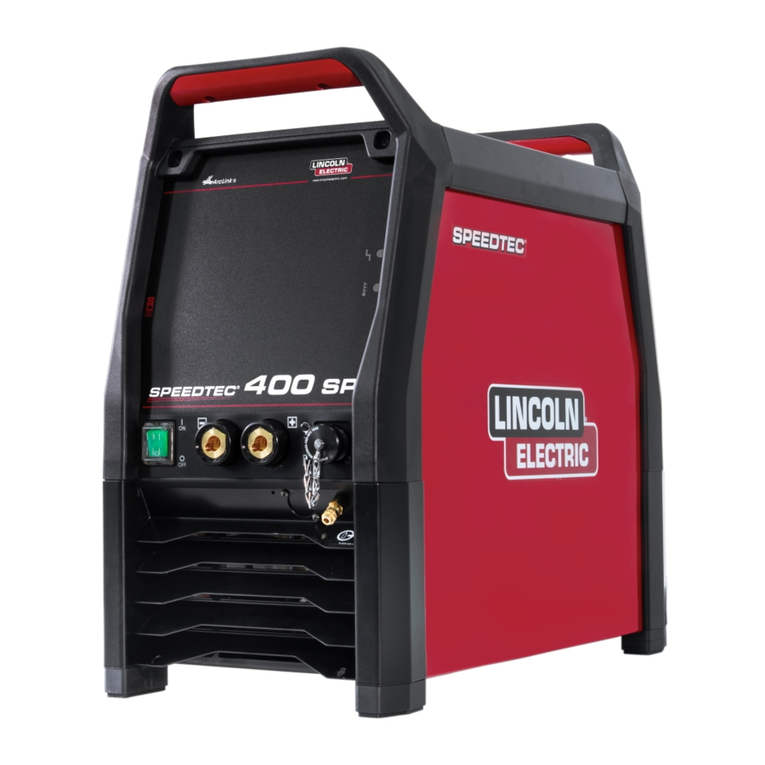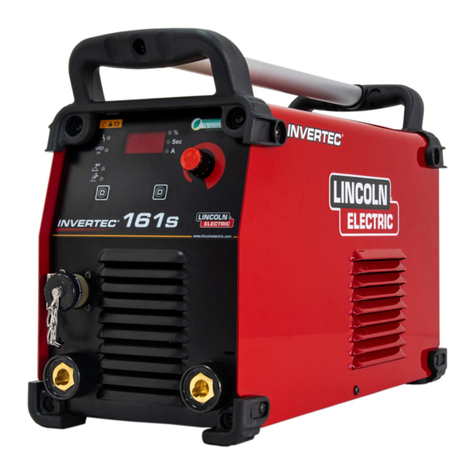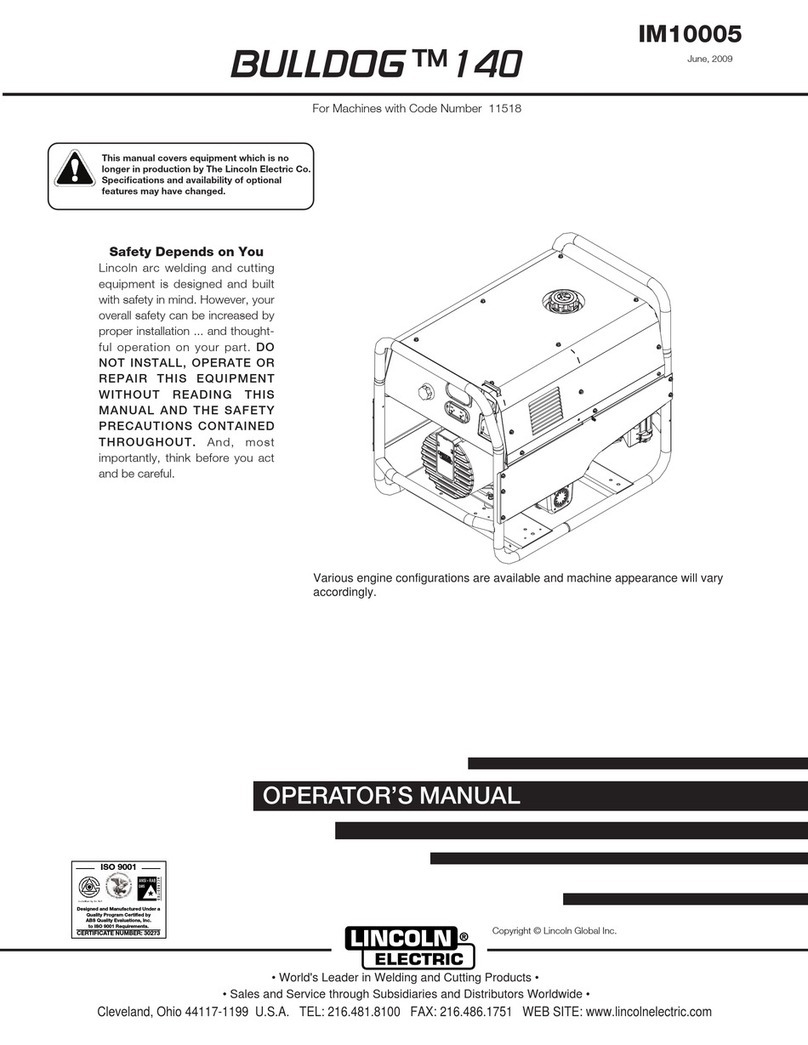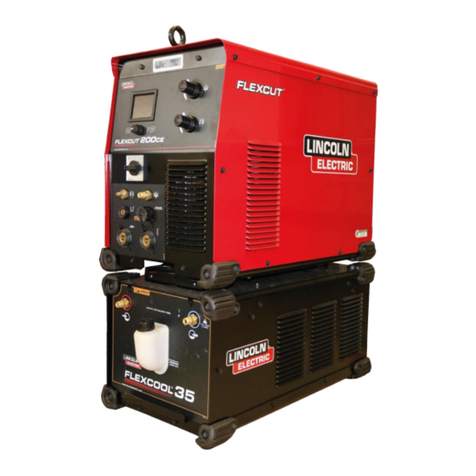
English 8 English
Cooling Efficiency
Figure 7 Circulation of COOL ARC®25
1. COOLANT RETURN
2. COOLANT IN TAKE
3. PUMP
4. FAN
5. HEAT EXCHANGER
6. HEATED AIR OUT
7. COOLANT OUT
8. COOLANT IN
9. RESERVOIR
The high cooling efficiency COOL ARC®25 offers a
cooler, more comfortable weld than conventional air-
cooled procedures as well as leading competitors water
cooled systems. The corrugated radiator of the heat
exchanger improves heat convection with minimal air flow
restriction. This design ensures a durable construction
which is able to withstand impact of different objects
through air slots. Figure 7 shows work principles of the
COOL ARC®25.
The COOL ARC®25 cooler effectively removes the heat
of the arc away from the gun or torch handle and places it
into the exiting air flow at the back of the cooler. Ambient
air temperature can affect the cooling parameters of the
COOL ARC®25.
For example:
COOL day (50°F, 10°C): More HEAT is transferred
from the water in the heat exchanger to the air. The
water is COOLER and more HEAT is transferred
from the gun or torch to the water.
RESULT: THE GUN OR TORCH FEELS COOLER
•HOT day (100°F, 38°C): Less HEAT is transferred
from the water in the heat exchanger to the air. The
water is HOTTER and less HEAT is transferred from
the gun or torch to the water.
RESULT: THE GUN OR TORCH FEELS HOTTER.
Unlike other water coolers that depend on bulky
reservoir size, the high efficiency components of
COOL ARC®25 cooler allows the reservoir size to be
small. The result is a lightweight, portable unit.
Cooling Efficiency - Recommended Values
COOL ARC®25 ref: K14037-1
Max welding current TIG 100% duty cycle 350A
Max welding current MIG 100% duty cycle 350A
Transport
To avoid freeze damage and water leakage during
transport, the coolant must be removed from the cooler’s
reservoir.
Maintenance
WARNING
For any repair operations, modifications or maintenance, it
is recommended to contact the nearest Technical Service
Center or Lincoln Electric. Repairs and modifications
performed by unauthorized service or personnel will
cause the manufacturer’s warranty to become null and
void.
Any noticeable damage should be reported immediately
and repaired.
Heat Exchanger Maintenance
To maintain maximum efficiency, the heat exchanger
should be kept clean from dust and dirt buildup. Clean the
heat exchanger periodically using a vacuum hose or low
pressure air line. Avoid placing the unit near a flux hopper
or a flux waste container. A clean heat exchanger offers
better cooling performance and longer product life. If
extremely dirty conditions exist, it may be necessary to
remove the heat exchanger completely from the cooler for
a thorough soap and water cleaning of the cooling fins.
Use care to avoid damaging the fins.
Reservoir Maintenance
The reservoir volume should be checked daily before
using the cooler. You can do it by observation the level of
the coolant in the sight window on the front panel.. The
unit is full when the coolant level reaches upper marker.
Keep the reservoir full especially after changing the water
lines. The cooler should always be operated with the
reservoir fill cap on. In areas where dust can be
introduced into the reservoir through water lines or
reservoir fill cap removal, periodically flush the unit out.
Dump the old coolant and rinse the inside of the reservoir.
Add new coolant when finished. A reservoir free from
particle buildup and dirt offers better cooling efficiency and
longer pump, gun and torch life.
ROUTINE MAINTENANCE
Check the condition of water-cooler hoses and
connections of the power lead.
Check the welding torch / gun condition: replace it, if
necessary.
Check condition and operation of the cooling fan. Keep
its airflow slots clean.
The reservoir volume should be checked daily before
using the cooler.
Keep the reservoir full, especially after disconnecting
the water lines or changing the accessory being cooled.








































